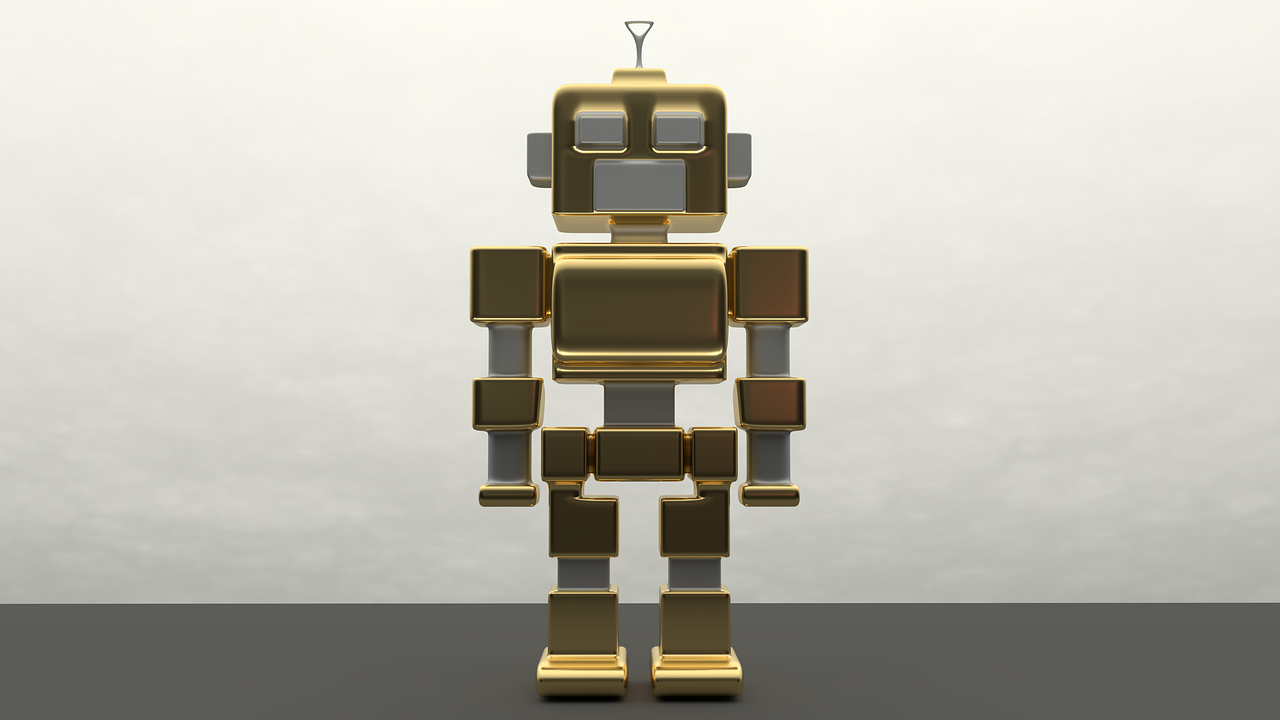The metaverse implies a shared environment that spans a multitude of 3D virtual worlds. Participants in the metaverse will be able to move freely through these virtual worlds, taking their identities, entitlements and goods with them. At least that’s one vision of how a universe of 3D virtual worlds will work.
Realizing this vision of an easily traversed, open metaverse, however, will require interoperability across multiple capabilities.
“Without standards and interoperability, there will be a flood of incompatible or isolated solutions slowing down the progression of data exchange between experiences,” said Royal O’Brien, executive director of the Open 3D Foundation (O3DF), which is coordinating work on open source standards for the 3D engines used to build games and simulations.
Building and agreeing upon standards is typically an arduous process. “For a standard to be successful, there has to be a level of trust where one party cannot influence the final design to their advantage,” O’Brien said.
Whether that can happen in the metaverse is an open question. Many of the current leading companies in the fledging metaverse have made their mark (and make their money) from having proprietary systems.
But while a walled garden approach may serve companies well in the short run, in O’Brien and others’ view, it will ultimately prevent the metaverse from blossoming, as explained below.
So, why is interoperability so important and what needs to be done to achieve it? That depends on how interoperability in the metaverse is defined.
What is metaverse interoperability?
The metaverse often gets conflated with the virtual reality (VR) and augmented reality (AR) technology used for experiencing a shared 3D world. Interoperability in the metaverse, however, is more than just the ability to share 3D models and visual avatars, said David Smith, founder and CTO of Croquet, a browser-based operating system for the metaverse.
“It is essential that metaverse worlds are fully collaborative and easily connected via live portals, and that smart objects and components can be moved and reused across worlds,” Smith said.
In an interoperable metaverse, your identity and ability to engage in commerce are as seamless as in the real world. Consumers are able to bring their wallets and smart objects across virtual worlds, just as they bring their credit cards and backpacks across stores today.
That said, interoperability in an open metaverse will be a little more nuanced than in the real world and technically more challenging, as all the systems and standards to make it happen are not yet in place.
Components of interoperability in the metaverse
Here are four components of interoperability that need to be addressed to create an open and easily traversed metaverse.
Identity. Identity forms the root chain of trust for connecting individuals to actions and assets. Today, consumer identity is often built on a chain of trust that is linked to email, social media platforms, Google or Apple. Business use cases in the metaverse will likely build on an enterprise’s existing identity and access management (IAM) infrastructure.
O3DF’s O’Brien said that standardization of identity and authentication, transactions, and a standard means of data interoperability across multiple immersive platforms are essential aspects of metaverse interoperability in the short run.
“Until I know who you are and how I can transact with you, as well as the means to hand you off to another server experience, you will break immersion,” he said, referring to being jolted out of the illusion of being in another world, or in a business context from the flow of work.
Croquet’s Smith added that identities are more than just the avatars representing the user. Every user will have multiple avatar representations and sometimes multiple ones in the same world. Identities help connect a wealth of information to an avatar, including not only the avatar’s wallet but also its preferences, history, reputation and abilities.
3D rendering. There are many levels to standardizing 3D representations of virtual worlds. 3D modeling and rendering engines need to interoperate. AR, VR and extended reality headsets need to work across platforms. Users need to be able to share 3D objects across platforms and render them at scale.
Progress is being made. Jonathan Girroir, technical evangelist at Tech Soft 3D, a software development kit provider, said that “metaverses and digital worlds have been a forcing factor in our industry to standardize on high-fidelity 3D file formats that allow us to move data in and out of these worlds.”
Promising approaches include the following:
- graphics language transmission format for sharing 3D objects;
- universal scene description (USD) open file format for sharing 3D worlds;
- fbx for sharing textures and lighting effects; and
- 3D Tiles for efficiently streaming 3D content at scale.
Behaviors and properties. There needs to be a standard way to characterize the behavior and properties of objects in the metaverse that translates across platforms. “These are the things that make the objects in the metaverse come alive and be responsive to the users,” said Smith. To do that, behaviors and properties must be persistent, copyable and able to move between worlds.
In the industrial metaverse, this could include physical properties and the costs of components or materials in an object to automatically compute the bill of materials. Nvidia is championing its PhysX engine as one approach for describing physical properties in the industrial metaverse.
Data sharing. An open metaverse also requires a decentralized approach to sharing information across the worlds. Decentralized ledgers like blockchain have been championed as one approach. Early blockchain use cases have helped spark a market for nonfungible tokens (NFTs), which allow people to buy and sell assets like art and land on the web. Down the road, more sophisticated NFTs could enable complex revenue-sharing agreements. For example, multiple artists could each automatically receive a royalty when their songs are remixed into a new compilation that grows popular.
In contrast, Tim Berners Lee, who pioneered the web, is advocating for a new web data infrastructure called Solid that does not use blockchain. It allows individuals to control how their data can be reused after the fact. This could prove crucial for enterprise metaverse use cases that create value for consumers, patients and citizens while respecting the owner’s changing wishes.

Why is interoperability in the metaverse important?
The initial focus of an interoperable metaverse will be on the consumer market, the people we interviewed said, as it will be important for consumers to know they can retain the value of their virtual assets even if they change platforms. Ideally, the Nike sneakers your avatar bought on one virtual platform should still be wearable on another.
Yugal Joshi, an analyst at Everest Group, said interoperability is not only necessary for consumers to have confidence their purchases work across platforms. As others have argued, he said it will ultimately also be needed to generate sales and establish a metaverse economy.
Down the road, the metaverse economy will expand interoperability to include business use cases and capabilities, Joshi said. For example, enterprises may want to share digital twins of a supply chain or their warehouses with trusted business partners to improve collaborative planning and coordination or speed virtual training for new robots.
Challenges with interoperability in the metaverse
Today most immersive virtual worlds or digital twins live in discrete environments. A lot of development needs to be done to open those environments up and reduce the friction in moving applications across platforms, said Tech Soft 3D’s Girroir, whose team works on translating 3D data across various architecture, engineering, design and entertainment applications.
Girroir said that 3D data from tools like AutoCAD, Blender and other 3D software form the foundation of the metaverse and will help businesses tie the digital with the real world. Enterprises will need to think about fusing lidar data captured in point clouds, vector data describing buildings and physics data describing how objects behave in the real world into a single, comprehensive view of a given asset or process.
There is also a growing interest in moving more of this kind of enterprise 3D data into the most popular gaming 3D engines from Unity, Epic and Nvidia. All these platforms come with faster, more realistic rendering capabilities than those available in traditional engineering tools.
Esri, the geographic information system giant, recently announced alliances with both Unity and Epic to help enterprises render GIS data in 3D gaming engines. Meanwhile, Siemens and Nvidia have partnered to build the so-called industrial metaverse that aims to develop autonomous factories, improve product design and enable the next evolution of industrial automation.
While progress is being made, big challenges remain in the quest for metaverse interoperability. Here are three.
Sharing behavior
Sharing smart components, including avatar capabilities, is essential to the growth and expansion of the metaverse. “What an object looks like is a tiny part of its value, but what it can do in a metaverse world is far more important and particularly difficult to achieve,” said Croquet’s Smith. This is particularly important in collaborative worlds where these components should instantly and perfectly interoperate with multiple users as if they are a single local object.
Vendor lock-in
Everest Group’s Joshi believes that many metaverse platforms are being constructed to lock in customers. Even though the platforms claim to be decentralized and open, he has found that their legal terms and conditions are different. As a result, if the platform decides to shut down, users could lose their assets forever.
Technical differences
Technical challenges, such as differences in 3D rendering engines, also hinder metaverse interoperability, said Joshi. He believes these differences can be overcome if there is a commitment to do so from vendors building the platforms.
Interoperability in the metaverse — around the corner or a pipe dream?
For now, an interoperable metaverse is more idea than reality. Currently, vendors and application developers use different approaches for each interoperability domain. In a genuinely interoperable metaverse, every participant would use the same standards and formats in processes.
In the meantime, many metaverse use cases will work just fine with limited interoperability across a few of these domains. For example, someone could bring a pair of sneakers between worlds with specific and narrow agreements about identity and basic 3D rendering.
More sophisticated workflows, particularly in enterprise use cases, however, will require greater agreement on more aspects. For example, an industrial digital twin of a factory may have to bring together physical plant data using sensors from different vendors, 3D rendering to share data across various applications and tools, and identity management for enforcing security across individuals and machines.
An open metaverse, if it happens, will take time. The industry took decades to develop standards for basic web interactivity and then to enable basic web applications and then mobile applications. Specifications for 3D interactivity and decentralized data sharing are still in the formative stages as enterprises discover the most promising use cases and profitable business models.
It may take another decade for interoperability to converge to where mobile is today. And in some cases, there may never be interoperability. For example, many mobile experiences are quite similar across Apple and Google devices. On the other hand, Tim Cook is on the record saying that he has no plans to extend the Apple Messaging experience to other mobile devices. The metaverse will likely have the same nuances.
Read More: news.google.com









 Bitcoin
Bitcoin  Ethereum
Ethereum  Tether
Tether  XRP
XRP  Solana
Solana  Dogecoin
Dogecoin  USDC
USDC  Cardano
Cardano  Lido Staked Ether
Lido Staked Ether  TRON
TRON  Avalanche
Avalanche  Sui
Sui  Wrapped stETH
Wrapped stETH  Chainlink
Chainlink  Toncoin
Toncoin  Stellar
Stellar  Shiba Inu
Shiba Inu  Wrapped Bitcoin
Wrapped Bitcoin  Hedera
Hedera  Polkadot
Polkadot  WETH
WETH  Bitcoin Cash
Bitcoin Cash  LEO Token
LEO Token  Uniswap
Uniswap  Litecoin
Litecoin  Pepe
Pepe  Hyperliquid
Hyperliquid  Wrapped eETH
Wrapped eETH  NEAR Protocol
NEAR Protocol  Ethena USDe
Ethena USDe  USDS
USDS  Internet Computer
Internet Computer  Aptos
Aptos  Aave
Aave  Mantle
Mantle  Render
Render  Cronos
Cronos  POL (ex-MATIC)
POL (ex-MATIC)  Ethereum Classic
Ethereum Classic  Bittensor
Bittensor  MANTRA
MANTRA  WhiteBIT Coin
WhiteBIT Coin  Virtuals Protocol
Virtuals Protocol  Artificial Superintelligence Alliance
Artificial Superintelligence Alliance  Tokenize Xchange
Tokenize Xchange  Monero
Monero  Dai
Dai